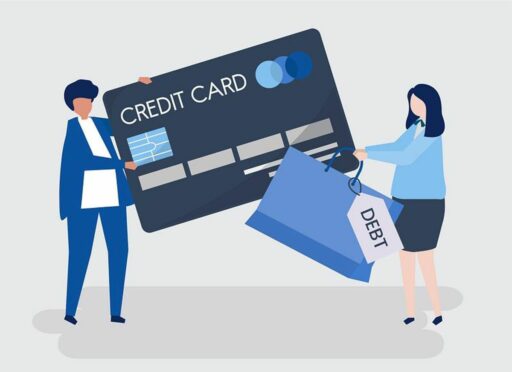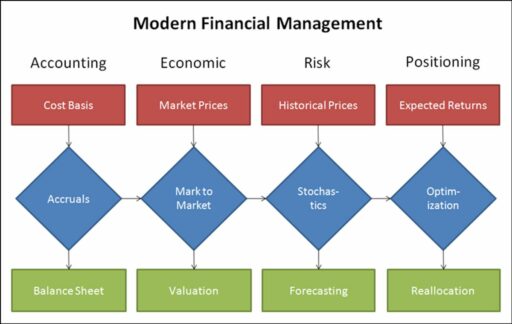Navigating the financial landscape with bad credit can be daunting, especially when it comes to securing consumer financing. Whether you’re aiming to purchase a home, grow a business, or refinance existing loans, understanding your options and the steps you can take to improve your creditworthiness is essential. This guide provides a comprehensive overview of how to approach financing with a less-than-perfect credit history, offering practical advice, alternatives, and strategies to enhance your chances of approval.
Key Takeaways
- Bad credit, typically defined as a FICO score below 580, significantly impacts financing options, but various strategies can improve your credit score and eligibility.
- Homebuyers with bad credit have specific loan options available; taking steps such as checking credit in advance and assembling documentation can increase approval chances.
- Business financing for those with poor credit includes understanding merchant cash advances and exploring alternative options, with preparation being key to application success.
- Refinancing with bad credit involves evaluating options and understanding the process; improving credit can lead to better terms and more favorable outcomes.
- Preventing bad credit scams requires awareness of common loan scams, practicing safe borrowing, and considering alternatives to high-cost, risky loans.
Understanding Bad Credit and Its Impact on Financing


Defining Bad Credit and Its Consequences
Bad credit is not just a number; it’s a reflection of past financial behaviors that can significantly hinder one’s ability to secure financing. Bad credit scores typically result from late payments, defaults, excessive credit usage, and serious credit infractions such as bankruptcies or charge-offs. These scores are crucial as they influence lenders’ decisions, often leading to loan rejections or unfavorable loan terms.
The consequences of bad credit extend beyond mere loan disapproval. Here’s a brief overview of the drawbacks:
- High-interest rates and fees, often required to be paid upfront.
- Further credit score damage if payments are missed or loans default.
- Increased susceptibility to predatory lenders and risky financial products.
It’s essential to recognize that while bad credit loans can provide temporary relief, they may not necessarily lead to long-term financial improvement. Instead, they can entrap borrowers in a cycle of debt with their high costs and stringent terms.
Understanding the specifics of bad credit is the first step towards managing and eventually improving your financial standing. A credit score under 580 is generally considered poor, but some lenders may label scores below 669 as bad, indicating that definitions can vary among financial institutions.
How Bad Credit Affects Loan Eligibility
Having bad credit can significantly hinder your ability to secure financing. Lenders often view a low credit score as a sign of a high-risk borrower, which can lead to either outright loan rejection or less favorable loan terms. Here’s how bad credit may affect your loan eligibility:
- Higher interest rates: Lenders typically charge higher interest rates to compensate for the increased risk.
- Additional fees: You may encounter higher fees or be required to pay certain fees upfront.
- Stricter loan terms: Terms may include shorter repayment periods or less flexibility with payment schedules.
- Limited loan amounts: The total proceeds approved may be lower than what you would qualify for with better credit.
- Requirement for collateral or co-signers: You might need to provide collateral or have a co-signer to get approved.
It’s crucial to understand that while bad credit loans are available, they come with strings attached that can exacerbate financial strain if not managed properly.
Before considering a bad credit loan, it’s advisable to explore all other options and understand the full scope of the loan’s terms and conditions. Remember, a loan is not just about getting approved; it’s also about being able to comfortably manage the repayment without worsening your financial situation.
Strategies for Improving Your Credit Score
Improving your credit score is a critical step towards better financing options. Paying your bills on time is essential, as it reflects positively on your credit history. Additionally, focus on paying down any existing debt, which can enhance your credit utilization ratio—a key factor in your credit score.
- Pay more than the minimum payments on your credit cards to reduce balances.
- Avoid unnecessary new credit inquiries to minimize their impact on your score.
- Regularly monitor your credit report for errors and dispute any inaccuracies.
Engaging in these activities not only boosts your credit score but also strengthens your overall financial health. Remember, a higher credit score can significantly improve your chances of securing favorable loan terms.
Exploring Home Loan Options for Buyers with Bad Credit


Types of Home Loans Available for Low Credit Scores
When exploring home loan options with a low credit score, it’s crucial to understand the landscape of available products. FHA loans are a common choice for buyers with credit scores below 600, offering more lenient lending requirements. VA loans are another option, specifically for veterans and service members, often requiring no down payment.
For those with scores hovering around the 580 to 670 range, certain lenders provide tailored loan products. For instance, Upgrade offers loans with a minimum credit score requirement of 560, which can be a viable option for many.
It’s important to remember that while options exist for lower credit scores, the terms and interest rates may be less favorable than those offered to individuals with higher credit scores.
Here’s a quick overview of some lenders and their terms:
| Lender | APR Range | Minimum Credit Score | Loan Amount | Best for |
|---|---|---|---|---|
| Upstart | 7.8% – 35.99% | 300 | $1,000 – $50,000 | Very low credit scores |
| BadCreditLoans.com | 5.99% – 35.99% | Any | $500 – $10,000 | Online resources |
| Credible | 6.40% – 35.99% | 550 | $600 – $100,000 | One-stop shopping |
| LendingPoint | 7.99% – 35.99% | 660 | $2,000 – $36,500 | Fast funding |
| Upgrade | 8.49% – 35.99% | 580 | $1,000 – $50,000 | Bad credit loan with rewards checking |
While this table provides a snapshot, it’s advisable to conduct thorough research or consult with a financial advisor to find the best fit for your situation.
Steps to Take Before Applying for a Home Loan
Before embarking on the journey to secure a home loan with bad credit, it’s essential to take preparatory steps to enhance your chances of approval. Knowing your credit score is the first critical step, as it dictates the types of loans you may qualify for and the interest rates you’ll face. Ensure that your credit report is free from errors, as inaccuracies can further damage your credit standing.
Next, assemble the necessary documentation. This includes recent pay stubs, W-2s, and statements from current loans or credit cards. Accurate information is paramount when shopping for rates to avoid any complications during the loan process.
Lastly, consider the types of bad credit home loans available and understand the average credit score requirements for each. Having a solid repayment plan in place will demonstrate to lenders your commitment to managing the loan responsibly. Below is a list of steps to guide you through this process:
- Verify your credit score and review your credit report for any discrepancies.
- Gather all required financial documents, such as income verification and loan statements.
- Research the different home loan options suitable for your credit score range.
- Develop a clear and feasible repayment strategy.
While you can get a mortgage with a credit score as low as 620, 580, or even 500, depending on the loan type, it’s crucial to prepare thoroughly to improve your chances of securing a favorable loan.
How to Increase Your Chances of Home Loan Approval
Improving your chances of home loan approval with bad credit involves a strategic approach. Ensure you meet the lender’s borrowing criteria by reviewing their requirements and preparing accordingly. A co-signer with a good credit score can significantly enhance your application, potentially leading to better rates and terms.
- Credit Score: Aim to raise your score for better approval odds and interest rates.
- Debt-to-Income Ratio: Lower your DTI to show lenders you can manage loan payments.
- Documentation: Gather all necessary financial documents to streamline the process.
- Co-signer: Consider applying with a creditworthy co-signer to strengthen your application.
- Repayment Terms: Choose terms that align with your budget to avoid financial strain.
By focusing on these key areas, you can position yourself as a more attractive candidate for lenders, despite having bad credit. Remember, each step you take to improve your financial standing can make a significant difference in the eyes of potential lenders.
Securing Business Financing with Less-Than-Perfect Credit


Understanding Merchant Cash Advances
A merchant cash advance (MCA) provides a unique financing solution for businesses with fluctuating sales. Unlike traditional loans, an MCA offers a lump sum in exchange for a portion of future credit card transactions. This method aligns repayment with the business’s cash flow, as repayments are deducted daily from credit card sales.
The application process for an MCA requires businesses to share their financial health, including credit and debit card sales. The amount advanced is contingent on the business’s sales history and growth potential. Funds from an MCA can be used for a variety of purposes, from operational costs to growth investments.
While MCAs offer quick access to capital, they often come with higher costs than conventional loans. It’s crucial for business owners to weigh the convenience against the potential financial impact.
The table below outlines the key differences between MCAs and traditional loans:
| Feature | Merchant Cash Advance | Traditional Loan |
|---|---|---|
| Repayment Method | Percentage of daily credit card sales | Fixed monthly payments |
| Flexibility | High (varies with sales volume) | Low (fixed terms) |
| Approval Speed | Fast | Varies |
| Cost | Generally higher due to fees and interest | Lower interest rates |
Business owners should carefully consider their options and seek advice from financial experts or resources that focus on borrowing money, credit scores, and financial options.
Alternative Financing Options for Small Businesses
While a merchant cash advance can be a quick fix, it’s not the only route for small businesses with bad credit. Traditional business loans, despite their more stringent criteria, often come with lower interest rates and clearer repayment schedules. Another avenue is a business line of credit, offering the flexibility to draw funds as needed and pay interest only on the used amount.
For those aiming to improve their financial standing, diligently working on credit score enhancement can gradually unlock a broader spectrum of loan products tailored to various credit profiles. It’s crucial to weigh all options and select a financing solution that aligns with your business’s financial objectives and supports sustainable growth.
Navigating the complexities of financing with bad credit is tough but achievable. Strategic planning, thorough research, and sound financial management are the cornerstones of securing the necessary support for your small business’s expansion.
Preparing Your Business for Loan Application Success
When preparing your business for loan application success, it’s essential to strategically plan and organize your financial information. This includes assembling all required documentation, such as recent pay stubs, W-2s, and statements from existing loans or credit cards. Accurate and thorough preparation can significantly increase your chances of approval, even with less-than-perfect credit.
- Know your credit score and understand its implications.
- Ensure your credit report is free from inaccuracies.
- Develop a solid repayment plan to demonstrate financial responsibility.
Navigating the complexities of securing financing with bad credit is challenging, but with the right approach, it’s achievable. Strategic planning, diligent research, and responsible financial management are the cornerstones of success.
Remember, each business has its unique needs and finding a tailored financing solution is key. Evaluate all options and choose one that aligns with your financial goals and credit situation, supporting long-term growth and success.
Refinancing Solutions for Those with Adverse Credit Histories


Evaluating Your Refinancing Options
When considering refinancing with a less-than-perfect credit score, it’s crucial to evaluate all available options to find the best fit for your financial situation. Begin by assessing your current credit profile and how it aligns with lenders’ requirements. For instance, some lenders have specific programs for those with credit scores below average, offering different interest rates and terms based on your score.
- Understand the types of refinancing available, such as rate-and-term refinancing or cash-out refinancing.
- Research lenders’ criteria for credit scores, co-signer availability, and repayment terms.
- Consider the potential impact on your monthly payments and overall interest charges.
It’s essential to approach refinancing with a clear understanding of your financial goals and how a new loan could help you achieve them. Remember, refinancing is not just about getting a lower interest rate; it’s about improving your financial health in the long term.
Lastly, be aware of the high fees that may be associated with low credit scores and the benefits that come with higher scores. This knowledge can guide you in making informed decisions and potentially negotiating better terms.
The Process of Refinancing with Bad Credit
Refinancing a mortgage with bad credit may seem daunting, but there are steps you can take to improve your chances of approval. First, check your credit in advance to understand your current standing and correct any errors. This proactive approach can lead to a better refinancing deal.
Next, gather all the necessary documentation. Lenders will scrutinize your financial stability, so having your paperwork in order is crucial. Here’s a quick checklist:
- Proof of income (e.g., pay stubs, tax returns)
- Asset information (e.g., bank statements, investment accounts)
- Debt obligations (e.g., credit card statements, loan documents)
While your credit score is a key factor, lenders also consider your debt-to-income ratio, employment history, and the equity in your home. Improving these areas can enhance your refinancing prospects.
If traditional refinancing options are not viable, explore government-backed programs like an FHA streamline refinance. These programs are designed for individuals with lower credit scores and may offer more lenient terms.
Improving Your Credit to Secure Better Refinancing Terms
Improving your credit score is a pivotal step in securing better terms for refinancing. Small increments in your credit score can significantly broaden your loan options. For instance, elevating your score from 620 to 650 might transition you from high-risk loan products to standard bank loans with more favorable rates.
By methodically reducing your debt-to-income (DTI) ratio and diligently gathering all necessary documentation, you enhance your refinancing eligibility.
Here are some actionable steps to improve your credit:
- Review your credit report for errors and dispute any inaccuracies.
- Lower your credit utilization by paying down credit card balances.
- Ensure timely bill payments to build a history of financial reliability.
- Consider requesting a credit limit increase on existing cards to improve your credit-to-debt ratio.
Remember, consistency is key. Regularly monitoring your credit and making informed financial decisions can lead to better refinancing opportunities.
Avoiding Pitfalls: Recognizing and Preventing Bad Credit Scams


Common Loan Scams Targeting Individuals with Bad Credit
Individuals with bad credit are often targeted by scams that can worsen their financial situation. Recognizing these fraudulent schemes is crucial to avoid falling into a trap that could lead to more debt and damage to your credit score.
- High upfront fees: Legitimate lenders typically do not require large fees before approving a loan.
- Guaranteed approval: No lender can guarantee approval without a credit check.
- Unsolicited offers: Be wary of unexpected loan offers, especially if they require personal information.
- Unlicensed lenders: Always verify that a lender is licensed to operate in your state.
Be cautious and thoroughly research any lender or loan product that seems too good to be true. It’s essential to understand the terms and conditions of any financial agreement to protect yourself from scams.
Tips for Safe Borrowing Practices
When seeking loans with bad credit, it’s essential to be vigilant and informed to avoid falling into traps that worsen your financial situation. Always verify the lender’s credibility before engaging in any transactions. Check their status with the Better Business Bureau and read reviews from other borrowers.
- Know your credit score and ensure your credit report is accurate.
- Understand the loan’s terms, including minimum and maximum amounts, interest rates, and permissible uses.
- Consider loans from trusted family or friends, formalizing the agreement to protect both parties.
- If possible, secure a loan with a cosigner to potentially lower interest rates.
Having a clear repayment plan is crucial. Not only does it demonstrate responsibility, but it also helps you avoid additional fees and penalties associated with late or missed payments.
Remember, haste can lead to mistakes. Take the time to research and compare your options, and never rush into a loan agreement under pressure. Scammers often exploit urgency, so if an offer seems too good to be true, it likely is.
Alternatives to Risky and High-Cost Loans
When faced with financial emergencies, individuals with bad credit may feel limited in their options. However, there are safer alternatives to high-cost loans that can help avoid the cycle of debt. Credit unions often offer payday-alternative loans (PALs) which are more consumer-friendly and report to credit bureaus, aiding in credit score improvement.
- Non-Loan Alternatives:
- Selling personal items
- Seeking assistance from non-profits
- Negotiating payment plans with creditors
These alternatives can provide relief without the risks associated with secured loans, such as asset repossession. It’s crucial to consider the long-term impact on your financial health and to choose options that contribute to a positive credit history.
Be cautious and diligent in your approach to borrowing. Avoid options that may seem convenient in the short term but could exacerbate your financial situation in the long run.
If you’re considering borrowing from family or friends, ensure to formalize the agreement with a written contract. This maintains trust and clarity on both sides. Additionally, having a cosigner can improve loan terms, but it’s important to honor the commitment to protect the cosigner’s credit as well.
Conclusion
Navigating the financial landscape with bad credit can be daunting, but as we’ve explored throughout this guide, there are viable options and strategies to secure financing. Whether you’re looking to buy a house, refinance a mortgage, or grow your small business, understanding your credit score, correcting any inaccuracies, and responsibly managing your finances are crucial steps. By considering secured loans, merchant cash advances, or alternative financing solutions, and being vigilant against loan scams, you can make informed decisions that align with your financial goals. Remember, improving your credit is a journey, and with the right approach, you can increase your chances of approval and pave the way for a more stable financial future.
Frequently Asked Questions
What is considered bad credit?
Bad credit means having a very low credit score, typically under 580 according to FICO, though some lenders may consider scores under 670 as bad credit.
Can I get a home loan with bad credit?
Yes, there are bad credit home loan options available. It’s important to research and understand the types of loans that cater to lower credit scores.
What steps should I take before applying for a home loan with bad credit?
Before applying, check your credit score, make any necessary corrections, pay off past-due balances, dispute late payments, and assemble required documentation.
How can I secure business financing with less-than-perfect credit?
Consider alternative financing options such as merchant cash advances, tailored small business loans, and strategic planning to improve your chances of loan approval.
What are some strategies for improving my credit score?
Improving your credit score can involve paying down balances, disputing inaccuracies on your credit report, making timely payments, and increasing your available credit.
How can I avoid bad credit loan scams?
Be wary of common loan scams, practice safe borrowing by researching lenders, and consider alternatives to risky or high-cost loans to prevent falling victim to scams.





